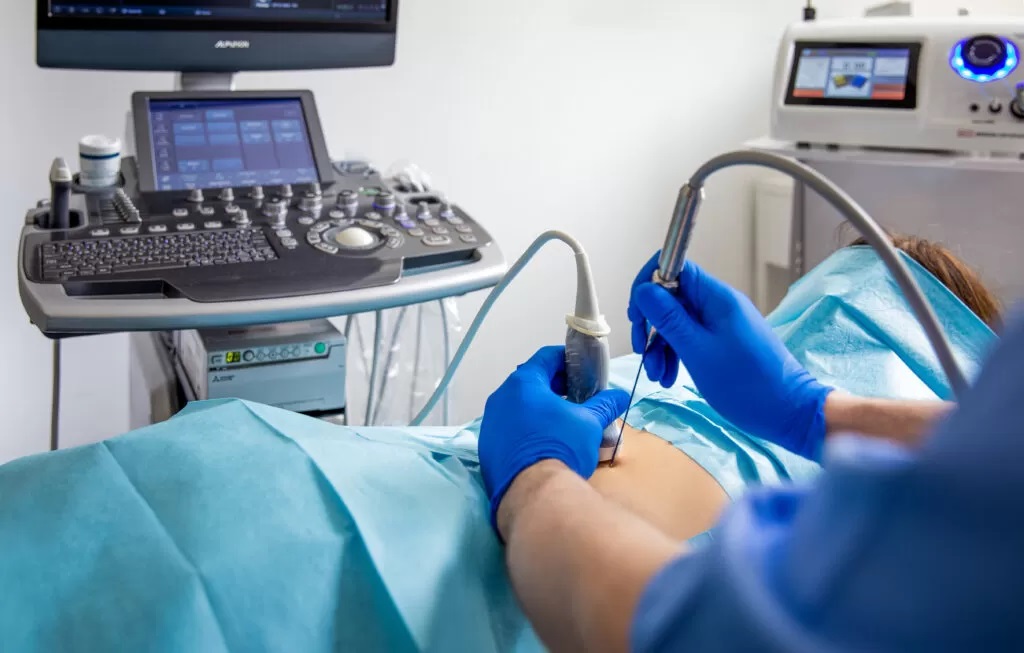Spinal cryoanalgesia
Cryolesis (cryoneurolysis, cryoanalgesia) is a method of treating pain that involves blocking the conduction of nerve impulses by locally freezing a nerve. This results in the abolition of pain sensation in a particular area of the body.
Cryoanalgesia is a reversible treatment – it does not destroy the structure of the nerve and does not cause side effects.

Cryoanalgesia is a surgical treatment – it is performed by a pain management specialist under the careful, continuous guidance of an ultrasound (US) head. Using ultrasound, the procedure targets a specific nerve supplying sensory input to the area or a joint.
The cryoanalgesia treatment is an excellent alternative for chronic pain medication users. It also creates new opportunities for patients awaiting back surgery – it not only eliminates pain, allowing for spontaneous increased activity, but also allows for the implementation of intensive rehabilitation. Thanks to the elimination of pain and targeted physiotherapy treatments, some of our patients manage to avoid surgery.
The treatment involves the insertion of a thin probe into the area of the corresponding nerve. The freezing reaction is caused by the rapid expansion of carbon dioxide inside the probe – the gas is inside the probe so there is no risk of an adverse reaction being the effect of the gas directly on the patient’s body. The tip of the probe lowers its temperature to about -70 degrees C.
The lack of side effects and systemic effects allows cryoanalgesia to be used repeatedly in the same person without causing any adverse effects.
Cryoanalgesia is used in the treatment and elimination of pain in the following cases:
- pain syndromes of the lumbar spine
- pain syndromes of the thoracic spine
- pain of the sacroiliac joint
The treatment is carried out after an initial qualification based on history, clinical examination and evaluation of imaging studies (X-ray, MRI). Initially, a trial nerve block is performed under ultrasound guidance assessing its effect on reducing pain. Reduction in the level of pain as a result of performing a diagnostic blockade promises effective abolition of pain after cryoablation procedures.
Author: Jacek Grabowski

